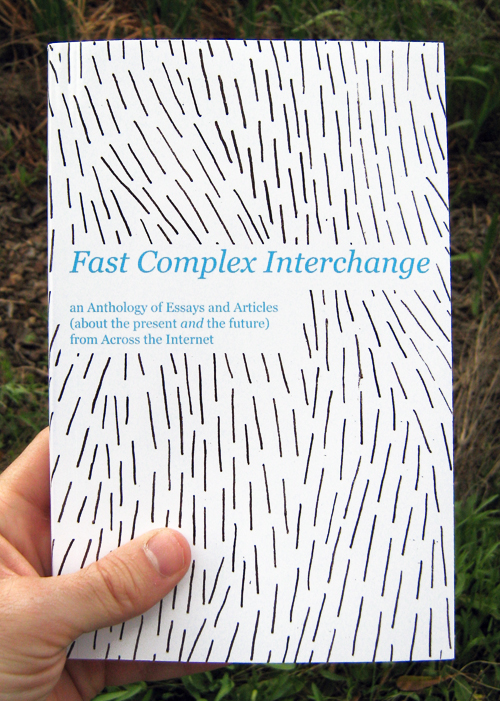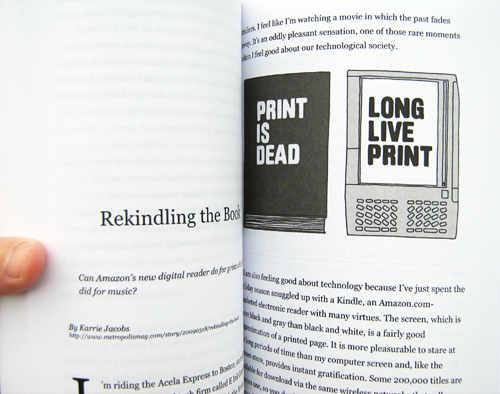
A few weeks ago, I posted about my first time using Lulu.com to create a book, which was actually just a compilation of articles that I had been planning to read online. After seeing a post by a Google employee about how he’d used Lulu to create a book of web articles so that he could read those articles more comfortably in print, I decided I had to try it out. It was a quick, easy and cheap success. Lulu’s application is really simple and well designed, which makes the user experience really great.
Even though my design was pretty spartan, with a far-too-small type size, I ended up reading through the 120 pages of articles pretty quickly. Since I had plenty more saved online, I decided to create a second book and employ some design improvements. This second one also ended up being twice the size (about 320 pages). I increased the type size slightly and gave more attention to the page layout. I also designed my own cover after Katie told me that using a print-quality image for the cover would increase the quality dramatically over simply choosing colors and text in Lulu’s “cover wizard.” You can check out a few more images below.
In general, I was pretty impressed with this service after making my first book. But after extending just a little more effort for the second one, I can see enormous potential with print-on-demand. I posted an article a few days ago about how print on demand might affect web content, and now I am even more convinced that print-on-demand is the future of printed publications. To be able to compile and create my own 320-page book with a custom-designed cover in just a couple of hours (including the time it took to create my book’s PDF and cover, upload it to Lulu, and configure my order) for under $10 and have it delivered to my office in 3 business days is just incredible.



//


